This article aims at making the reader understand how knowledge representation works in Artificial Intelligence and what is its use. Information regarding the types of knowledge representation, their properties, and approaches is provided in this article. The readers can expect a decent understanding of knowledge representation after going through this article.
Introduction
Artificial Intelligence as technology has always fascinated human beings. There have been multiple science fiction novels and movies where AI-powered systems such as Robots can think, act, understand complex information, and make smart decisions based on it. However, one concept that one must understand before creating that level of Artificial Intelligence is rather psychological or biological. What makes humans different from other animals or machines is our conscience. While scientists have often found it difficult to explain what conscience is, one can agree that it is the sum of our memories, i.e., all the knowledge we have gathered so far. This knowledge makes different personalities and makes humans behave differently and take different actions. Therefore, all the capabilities of humans stem from this gathered knowledge. Thus, prior knowledge of knowing that a teacup is hot refrains us from touching it. If we were to make AI more sophisticated, we would be required to provide them with more and often complex information about our world to perform the complex task, which leads to the concept of Knowledge Representation in Artificial Intelligence.
AnalytixLabs is the premier Data Analytics Institute that specializes in training individuals and corporates to gain industry-relevant knowledge of Data Science and its related aspects. It is led by a faculty of McKinsey, IIT, IIM, and FMS alumni who have a great level of practical expertise. Being in the education sector for a long enough time and having a wide client base, AnalytixLabs helps young aspirants greatly to have a career in Data Science.
What is Knowledge Representation?
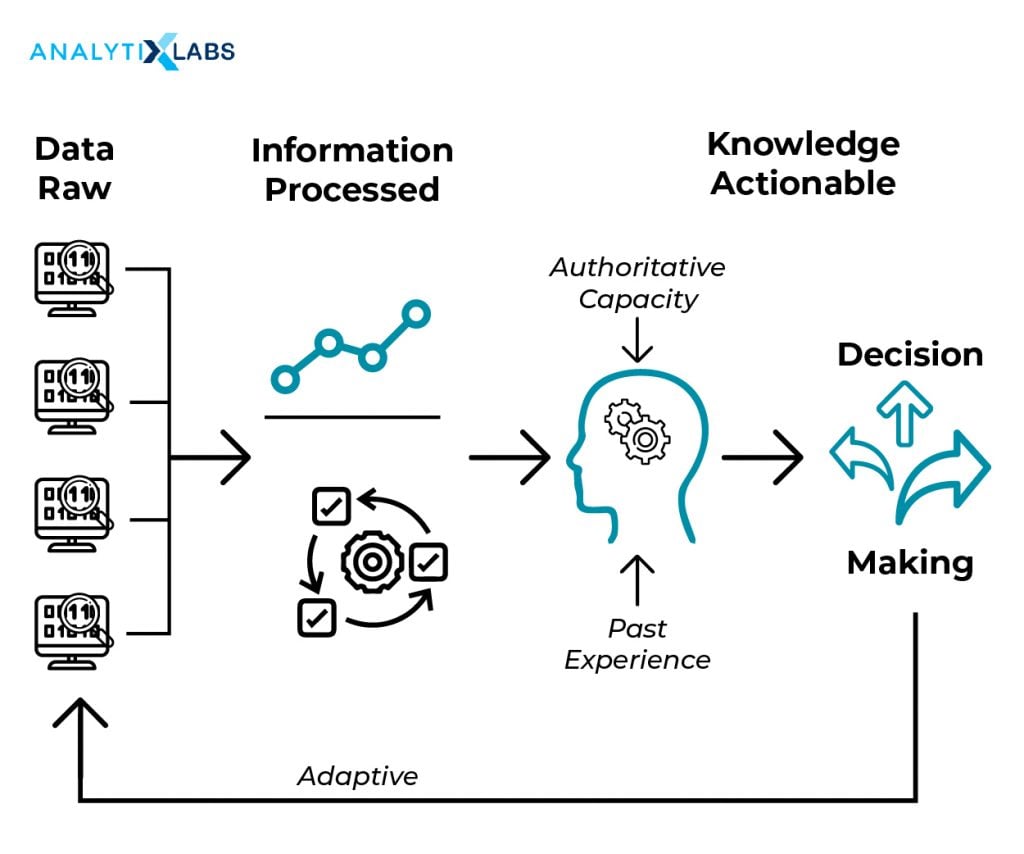
Knowledge Representation in Artificial Intelligence refers to that concept where ways are identified to provide machines with the knowledge that humans possess so that AI systems can become better. As it is a universal fact that more a person knows a subject matter, the chances of taking a correct action or decision will be higher. This gives the AI developers who are in the quest of making the AI systems smarter a task at hand- to represent the knowledge of the human world in a way that machines can understand and can make the AI systems smarter to solve complex real-world problems. The problem is that we humans process information in a highly complex manner.
We have concepts that are completely alien to the machine, such as intuition, intentions, prejudices, beliefs, judgments, common sense, etc., while some knowledge is straight forward such as knowing certain facts, general knowledge regarding objects, events, people, academic disciplines, language among other straight-forward things that machines have been able to comprehend with a level of success. With Knowledge Representation and Reasoning (KR, KRR), now we have to represent this information in a machine-understandable format and make the AI system truly intelligent. Here knowledge will mean providing and storing the information regarding the environment, reasoning will be deducing this stored information, and intelligence will mean taking decisions and actions based on knowledge and reasoning.
The first thing we have to identify is what is to be presented in the first place. This has been identified as the following:
- Object
Numerous objects constantly surround humans. The information regarding these objects is something that we can consider as a type of knowledge. For example, cars have wheels, and the piano has keys, the train is a locomotive, etc.
- Events
Our perception of the world is based on what we know regarding the various events that have taken place in our world. This knowledge is regarding all those events. The wars, famines, achievements, advancement of societies, etc., are an example of this knowledge.
- Performance
It deals with how humans and other beings and things perform certain actions in different situations. Thus, it helps in understanding the behavior side of the knowledge.
- Meta Knowledge
In a way, if we look at the world around us and take the sum of all the knowledge that is out there, then this can be divided into 3 categories: What we know, What we know that we don’t know, and knowledge that we even are unaware of and Metaknowledge deals with the first concept. Thus, meta-knowledge is the knowledge of what we know.
- Facts
As the name suggests, this is the knowledge of the factual description of the world.
- Knowledge-base
It is the main component of any human, i.e., having a knowledge base. This refers to a group of information regarding any discipline, field, etc. For example, a knowledge-base regarding constructing roads.
You may also like to read: Components Of Artificial Intelligence – How It Works?
Types of Knowledge Representation
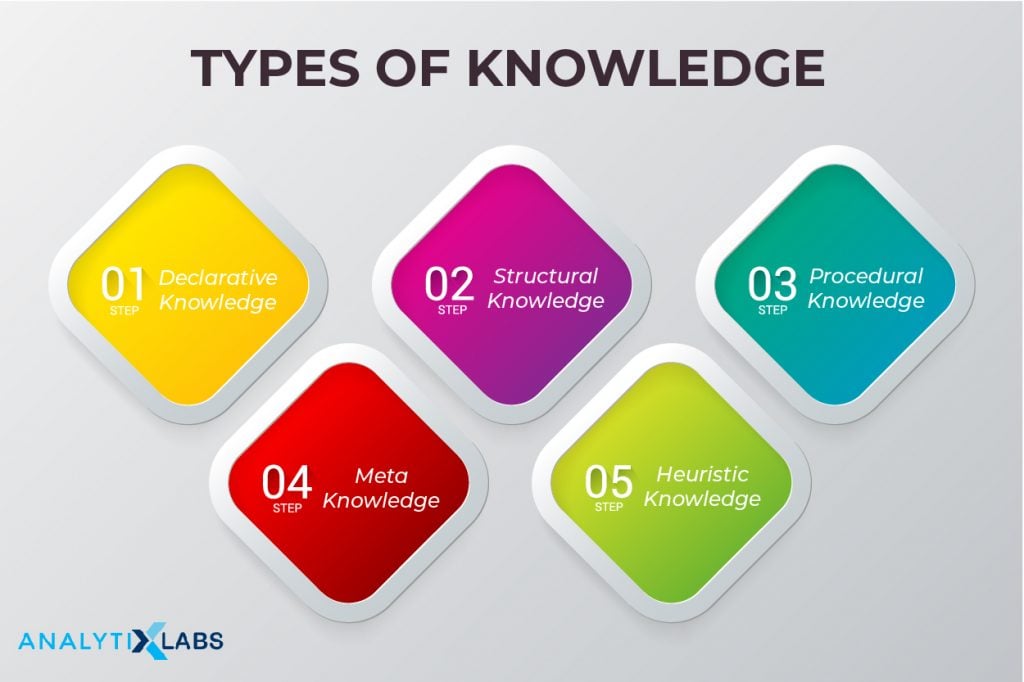
Given the understanding of the complexity of knowledge representation in AI, one thing is pretty obvious: to represent knowledge to machines, we first have to identify and classify the different types of knowledge. While above we have done so to a certain degree, the following are the formal terms and definitions in which the knowledge can represent-
- Declarative Knowledge
It is the knowledge that represents the facts, objects, concepts that help us describe the world around us. Thus it deals with the description of something.
- Procedural Knowledge
This type of knowledge is more complex than declarative knowledge as it refers to a more complex idea, i.e., how things behave and work. Thus this knowledge is used to accomplish any task using certain procedures, rules, and strategies, making the system using this knowledge work efficiently. Also, this type of knowledge highly depends on the task we are trying to accomplish.
- Meta Knowledge
As mentioned earlier, meta-knowledge is the group of knowledge that is a type of knowledge when combined. Thus, it is the knowledge regarding other types of knowledge.
- Heuristic Knowledge
The knowledge provided by experts of certain domains, subjects, disciplines, and fields is known as the Heuristic knowledge, which they have been obtained after years of experience. This type of knowledge helps in taking the best approach to particular problems and making decisions.
- Structural Knowledge
This type of knowledge helps establish relationships between concepts or objects and their description, acting as the basic form of knowledge to solve real-world problems.
Properties of Knowledge Representation
Whenever knowledge representation in AI is discussed, we discuss creating the knowledge representation system that can represent the various types of knowledge discussed above. This system must manifest certain properties that can help us in assessing the system. Following are these properties-
- Representational Adequacy
A major property of a knowledge representation system is that it is adequate and can make an AI system understand, i.e., represent all the knowledge required by it to deal with a particular field or domain.
- Inferential Adequacy
The knowledge representation system is flexible enough to deal with the present knowledge to make way for newly possessed knowledge.
- Inferential Efficiency
The representation system cannot accommodate new knowledge in the presence of the old knowledge, but it can add this knowledge efficiently and in a seamless manner.
- Acquisitional Efficiency
The final property of the knowledge representation system will be its ability to gain new knowledge automatically, helping the AI to add to its current knowledge and consequently become increasingly smarter and productive.
Use of Knowledge Representation in the AI Knowledge Cycle
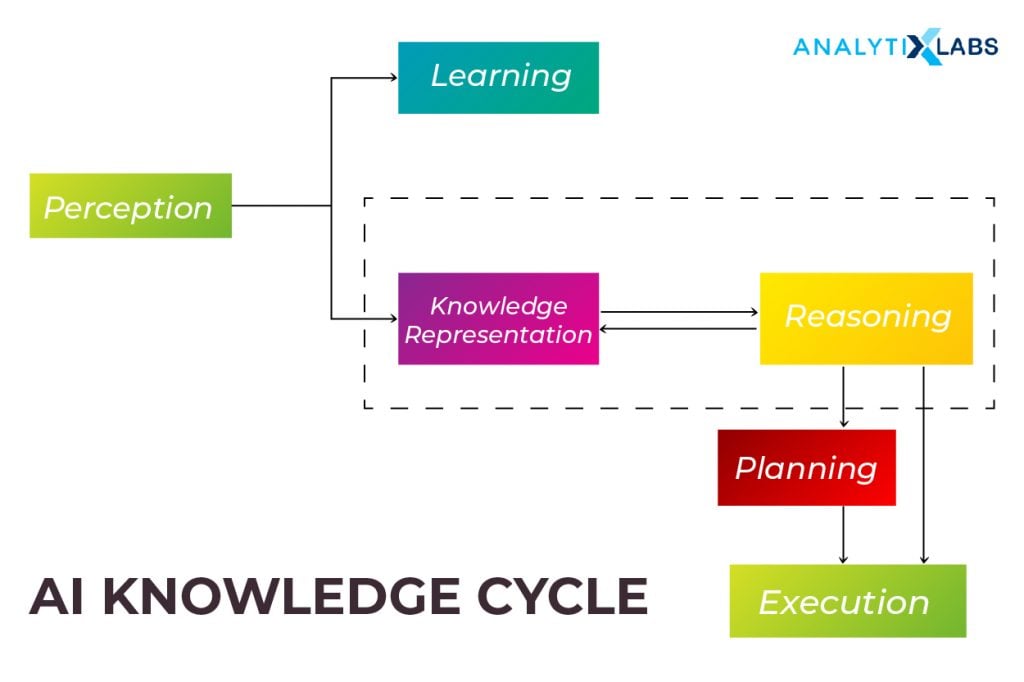
Our main aim when building an AI system to come up with a knowledge representation system that will help us feed in the knowledge. This knowledge representation will be used in AI in the following ways-
- Perception Block
This will help the AI system gain information regarding its surroundings through various sensors, thus making the AI system familiar with its environment and helping it interact with it. These senses can be in the form of typical structured data or other forms such as video, audio, text, time, temperature, or any other sensor-based input.
- Learning Block
The knowledge gained will help the AI system to run the deep learning algorithms. These algorithms are written in the learning block, making the AI system transfer the necessary information from the perception block to the learning block for learning (training).
- Knowledge and Reasoning Block
As mentioned earlier, we use the knowledge, and based on it, we reason and then take any decision. Thus, these two blocks are responsible for acting like humans go through all the knowledge data and find the relevant ones to be provided to the learning model whenever it is required.
- Planning and Execution Block
These two blocks though independent, can work in tandem. These blocks take the information from the knowledge block and the reasoning block and, based on it, execute certain actions. Thus, knowledge representation is extremely useful for AI systems to work intelligently.
Knowledge Representation Techniques in AI
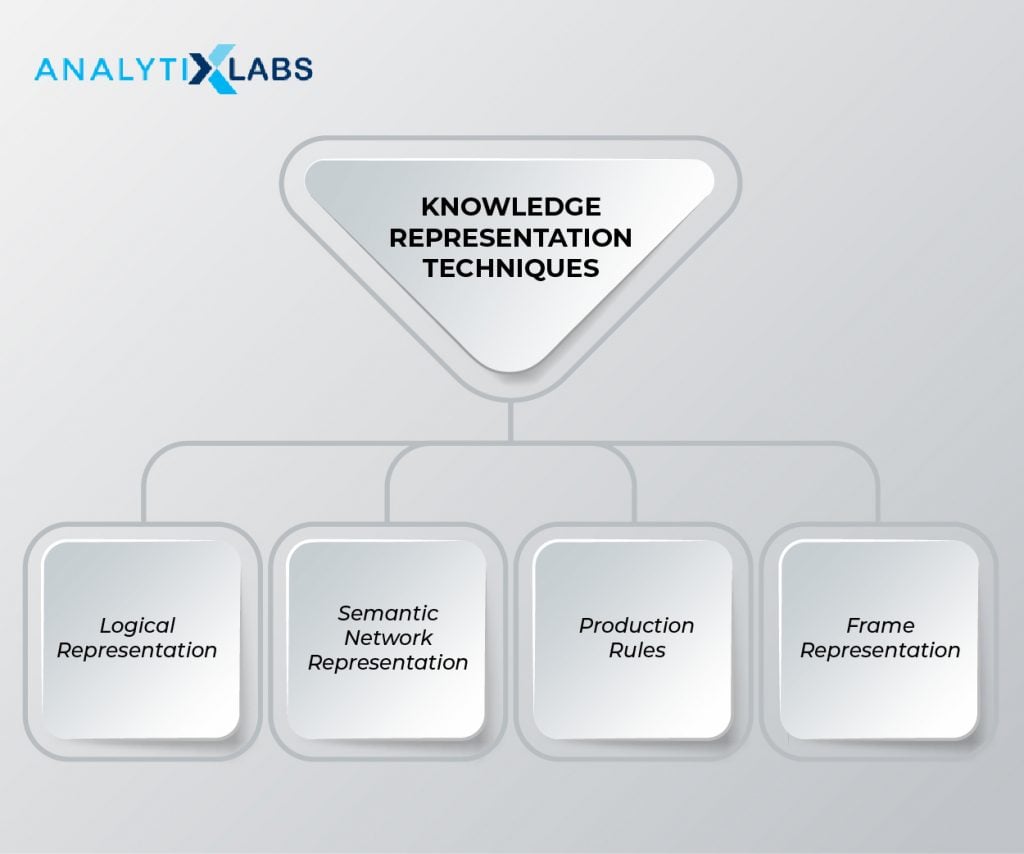
So far, we have identified how we can describe and classify the knowledge that humans possess. We also have understood what properties a proper knowledge representation will have and what use it will have in the AI’s knowledge cycle. Now the only question remains how this knowledge can be represented so that a machine can make sense of it. This leads to the discussion of exploring the various techniques or methods in representing knowledge. One has to keep in mind that there are numerous ways to achieve this, and no method is perfect and has its own disadvantages.
By and large, there are 4 main techniques out there to represent the knowledge- logical, semantic network, production rules, and frame.
Logical Representation
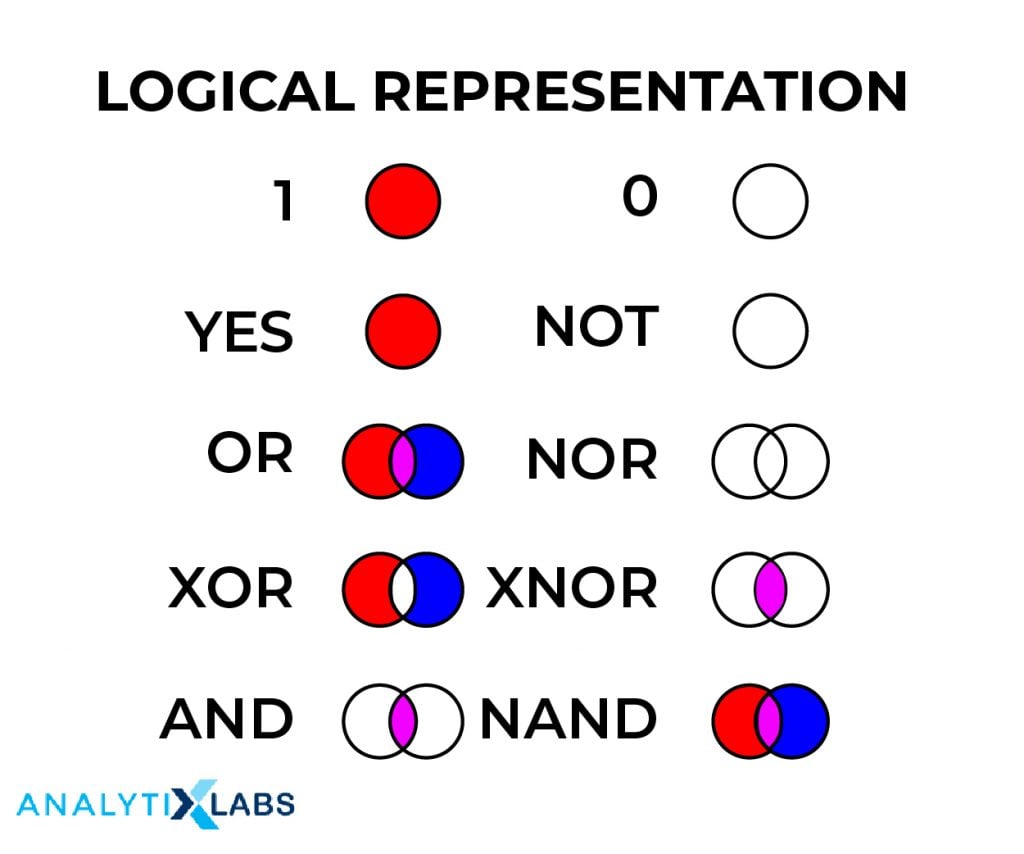
It is the most basic form of representing knowledge to machines where a well-defined syntax with proper rules is used. This syntax needs to have no ambiguity in its meaning and must deal with prepositions. Thus, this logical form of presentation acts as communication rules and is why it can be best used when representing facts to a machine. Logical Representation can be of two types-
- Propositional Logic: This type of logical representation is also known as propositional calculus or statement logic. This works in a Boolean, i.e., True or False method.
- First-order Logic: This type of logical representation is also known as the First Order Predicate Calculus Logic (FOPL). This logical representation represents the objects in quantifiers and predicates and is an advanced version of propositional logic.
If you may or may not have noticed by now, this form of representation is the basis of most of the programming languages we know of where we use semantics to convey information, and this form is highly logical. However, the downside of this method is that due to the strict nature of representation (because of being highly logical), it is tough to work with as it’s not very natural and less efficient at times.
Semantic Networks
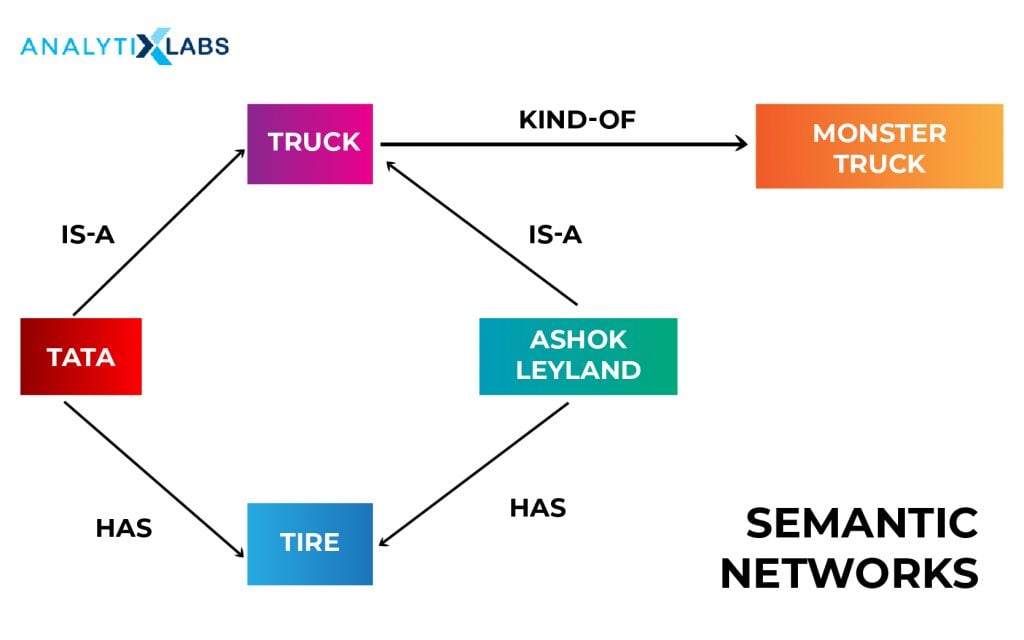
In this form, a graphical representation conveys how the objects are connected and are often used with a data network. The Semantic networks consist of node/block (the objects) and arcs/edges (the connections) that explain how the objects are connected. This form of representation is also known as an alternative to the FPOL form of representation. The relationships found in the Semantic Networks can be of two types – IS-A and instance (KIND-OF). This form of representation is more natural than logical. It is simple to understand however suffers from being computationally expensive and do not have the equivalent of quantifiers found in the logical representation.
Production Rules
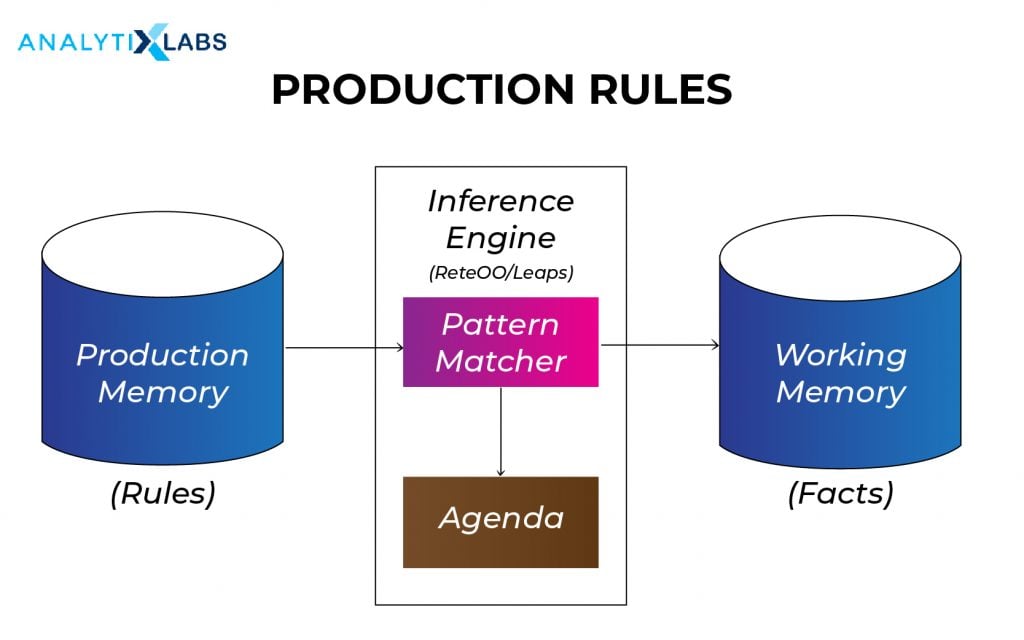
It is among the most common ways in which knowledge is represented in AI systems. In the simplest form, it can be understood as a simple if-else rule-based system and, in a way, is the combination of Propositional and FOPL logics. However, a more technical understanding of production rules can be understood by first understanding what this representation system is comprised of. This system comprises a set of production rules, rule applier, working memory, and a recognize act cycle. For every input, conditions are checked from the set of a production rule, and upon finding a suitable rule, an action is committed. This cycle of selecting the rule based on some conditions and consequently acting to solve the problem is known as a recognition and act cycle, which takes place for every input. This method has certain problems, such as the lack of gaining experience as it doesn’t store the past results and can also be inefficient as, during execution, many other rules may be active. The cost of these disadvantages can be redeemed because the rules of this system are expressed in natural language, where the rules can also be easily changed and dropped (if required).
Frame Representation
If this representation is to be understood at a fundamental level, then one can imagine a table having column names and values in rows and information being passed in this structure. However, the proper understanding is that it is a collection of attributes and values linked to it. This AI-specific data structure uses slots and fillers (i.e., slot values, which can be of any data type and shape). As you would have noticed, it has a similar concept to how information is stored in a typical DBMS. These slots and fillers form a structure – a frame. The slots here have the name (attributes), and knowledge related to it is stored in the fillers. The biggest advantage of this form of representation is that due to its structure, similar data can be combined in groups as frame representation can divide the knowledge in structures and then further into sub-structures. Also, being like any typical data structure can be understood, visualized, manipulated easily, and typical concepts such as adding, removing, deleting slots can be done effortlessly.
While these are the main ways the knowledge can be represented, there are other ways, such as using scripts, an advanced technique, and a step up from frame representation.
Approaches to knowledge representation
The only concept we are left with now of how we can store the information in the system. Of the different ways, there are 4 main approaches to knowledge representation in artificial intelligence, viz. simple relational knowledge, inheritable knowledge, inferential knowledge, and procedural knowledge—each of these ways corresponding to a technique of representing knowledge discussed above.
- Simple Relational Knowledge
This is a relational method of storing facts which is among the simplest of the method. This method helps in storing facts where each fact regarding an object is providing in columns. This approach is prevalent in DBMS (database management systems).
- Inheritable Knowledge
Knowledge here is stored hierarchically. A well-structured hierarchy of classes is formed where data is stored, which provides the opportunity for inference. Here we can apply inheritance property, allowing us to have inheritable knowledge. This way, the relations between instance and class (aka instance relation) can be identified. Unlike Simple Relations, here, the objects are represented as nodes.
- Inferential Knowledge
In this method, logics are used. Being a very formal approach, facts can be retrieved with a high level of accuracy.
- Procedural Knowledge
This method uses programs and codes that use simple if-then rules. This is the way many programming languages such as LIST, Prolog save information. We may not use this method to represent all forms of knowledge, but domain-specific knowledge can very efficiently be stored in this manner.
Notes for Knowledge Representation in Artificial Intelligence
Knowledge representation is the key through which we can make the future AI system much smarter than compared to what they are today. There are certain knowledge representation issues in artificial intelligence one still has to keep in mind when designing a knowledge representation system. Dilemmas such as which structure to choose for storing knowledge are important ones. We also need to understand the depth of information required regarding a subject matter for it to be adequately represented. These are some of the things that one has to vary during the creation of such knowledge systems.
Humans have been chasing the dream of creating an AI system whose intelligence is at par with humans for a very long time. As discussed, the key for that is to provide knowledge to the systems, and for that, we need a knowledge representation system. We discussed the types of knowledge we possess, how a knowledge representation system can be helpful, how it can be created and corresponding to it, how knowledge can be stored. As we go forward, we hope for a better and more sophisticated knowledge representation system. We can provide knowledge to the AI system in a seamless manner, perhaps how we provide knowledge to other human other or even easier than that.
FAQs – Frequently Asked Questions
- How many ways are there to represent knowledge in artificial intelligence?
There are mainly 4 ways in which we can represent knowledge in artificial intelligence. The logical representation that uses rules-based methods, semantic networks that used graphical representation to convey knowledge, production rules based on predefined conditions assist the machine in understanding input and taking actions, and lastly, frame representation that uses a slots-fillers structure to pass knowledge to an AI system.
- What are the types of knowledge representation?
Knowledge can be represented and understood in multiple ways.
- Declarative- explains facts
- Procedural- explain the behavior
- Metaknowledge of other topics of knowledge
- Heuristic-knowledge of specific fields and domains
- Structural- knowledge for seeing the relations between different objects
- How do you represent facts and knowledge in AI?
While there are different types of knowledge, we use logical representation to represent facts to AI. It uses a well-defined syntax to do so, leaving little room for speculation and error.
- How many types of entities are there in knowledge representation?
There are multiple entities in a knowledge representation. A knowledge representation system has to work in an AI knowledge cycle comprising multiple elements where knowledge is represented and used. These include perception block, learning block, knowledge block, reasoning block, planning block, and execution block.
Concluding Thoughts
This article aimed at providing the reader with an understanding of the concept of Knowledge representation in Artificial Intelligence. We focused on what knowledge was to humans and how it can help AI become better. A number of ways in which type of knowledge and how they can be stored and represented were understood and some of the knowledge representation issues in artificial intelligence. As AI is an evolving field, there is a huge possibility that more mechanisms of knowledge representation will come up in the near future.
We hope this article helped you understand this subject and encourage you to start building your own AI system by representing your knowledge. If you have any opinions or queries about this article, please feel free to post and help us get more insights regarding knowledge representation.
You may also like to read:
18 (Interesting) Artificial Intelligence Projects Ideas
Top 60 Artificial Intelligence Interview Questions & Answers
A Complete Guide on the Artificial Intelligence Course Syllabus

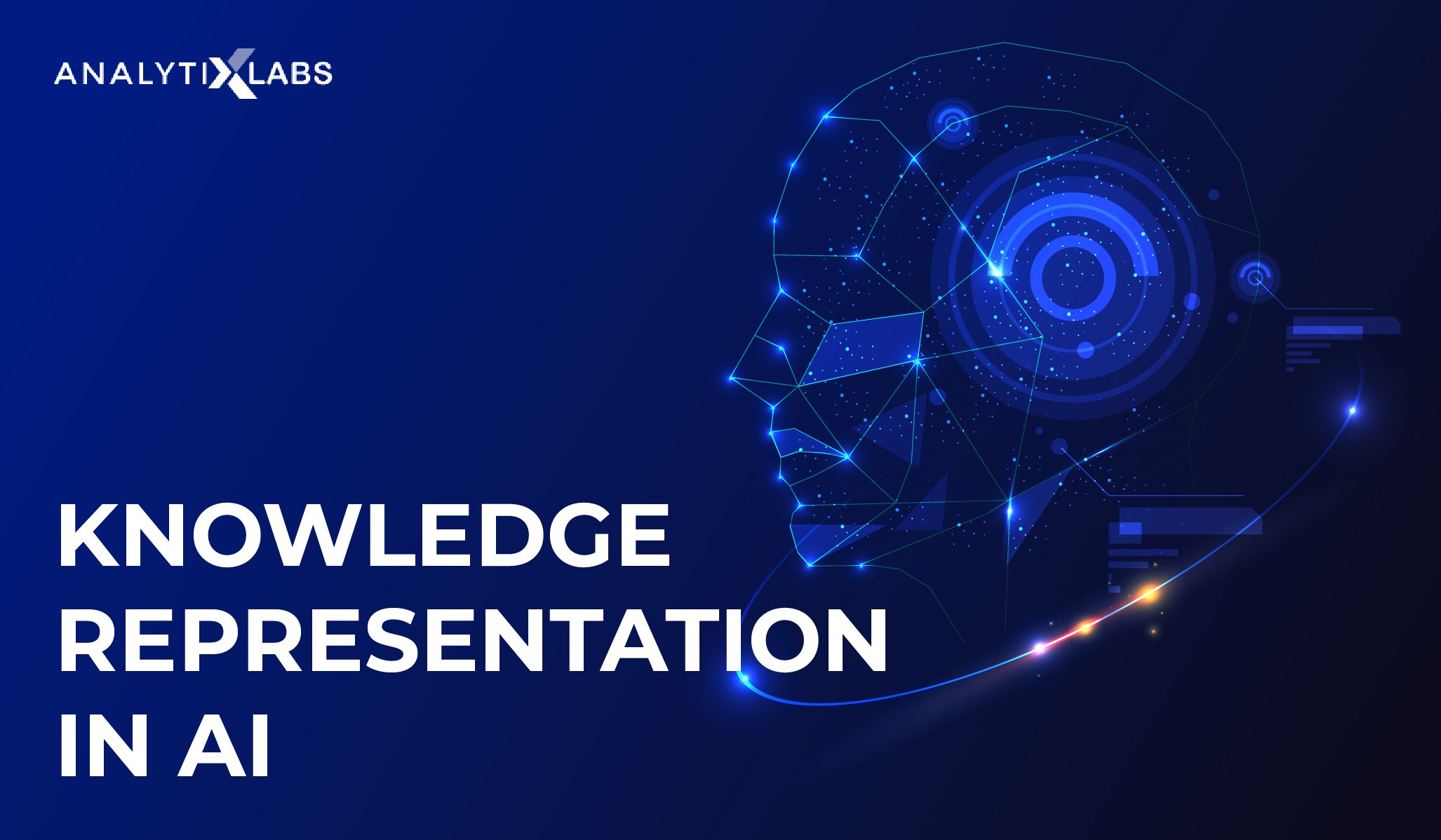
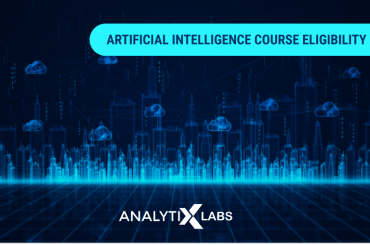
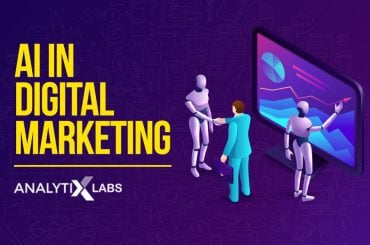
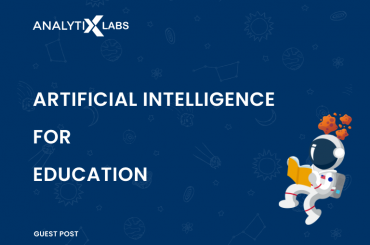
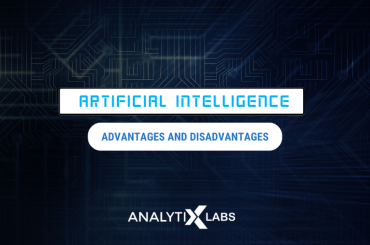



3 Comments
Very in-depth and clearly explained article. AI is a technology that is going to change the future how we perform our daily business operations.
I really enjoyed your post.
Thank you for sharing this helpful post.
Interesting, just like they have been building a new generation based offy Brain waves